Coronavirus outbreak map 2020 | Coronavirus Map 2020
Coronavirus has been spreading rapidly across the world, affecting more than 160 countries and claiming more than 11,000 lives.
There are now more than 260,000 confirmed cases - most outside China where the virus originated. Europe is at the centre of the crisis, with cases and deaths rising in several countries.
This series of maps and charts will help you understand what is going on.
1. The virus outbreak is a global pandemic
The rise in the number of daily confirmed cases internationally has led the World Health Organization (WHO) to declare the spread of coronavirus a global pandemic.
This is when an infectious disease is passing easily from person to person in many parts of the world at the same time.
More than 80,000 people in China have been diagnosed with the infection since its emergence in the city of Wuhan, Hubei province, in December - although its exact source has not yet been identified.
But there are now more than 215,000 confirmed cases outside China, according to the latest figures from Johns Hopkins University.
The WHO said it took more than three months to reach the first 100,000 confirmed cases worldwide, but only 12 days to reach the next 100,000.
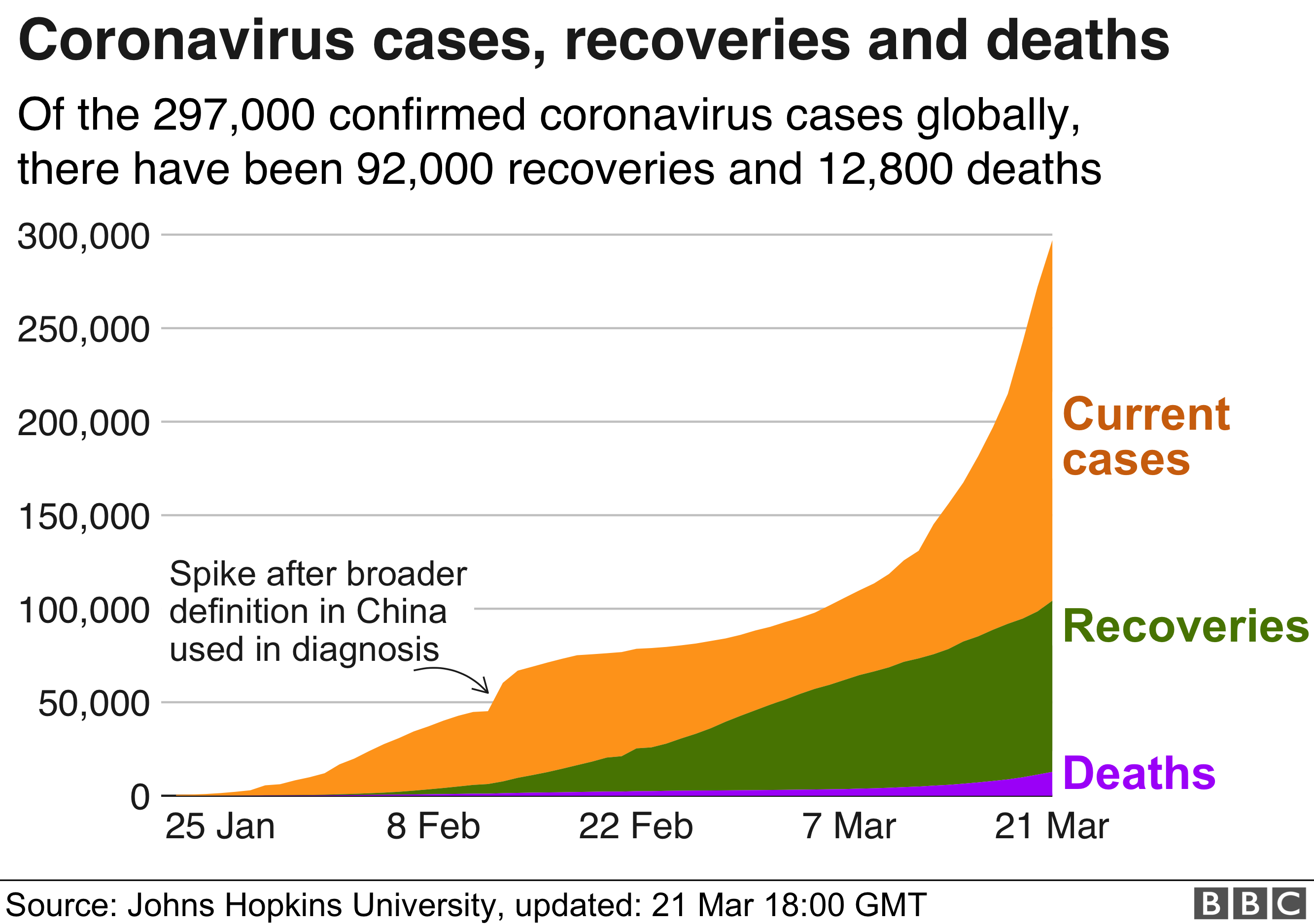
While these figures are for confirmed cases, the actual number of people with coronavirus internationally is thought to be much higher - as many of those with mild symptoms have not been tested and counted.
In response to the virus's spread, countries around the world are ramping up measures to try to slow it down.
Governments have halted flights from virus-hit nations, locked down towns and cities and urged people to stay at home.
President Donald Trump has declared a national emergency in the US and announced a travel ban on European countries, including the UK and Ireland, as well as China and Iran.
Travellers from outside the EU are also being turned away from airports and borders after the 27-country bloc imposed a 30-day ban on entry.
Many international conferences and sporting events have also been cancelled or postponed, including Six Nations rugby matches, Euro 2020, the Copa America and this year's meeting of G7 leaders in the US.

- A SIMPLE GUIDE: What are the symptoms?
- AVOIDING CONTACT: Should I self-isolate?
- STRESS: How to protect your mental health
- UK LOOK-UP TOOL: Check cases in your area
- VIDEO: The 20-second hand wash

2. The virus has killed more people in Italy than China
Italy currently has the most confirmed cases outside China - and on Thursday surpassed China's death toll.
While Italy has about 53,600 confirmed cases compared with China's 81,000, its death toll of 4,825 exceeds China's by several hundred.
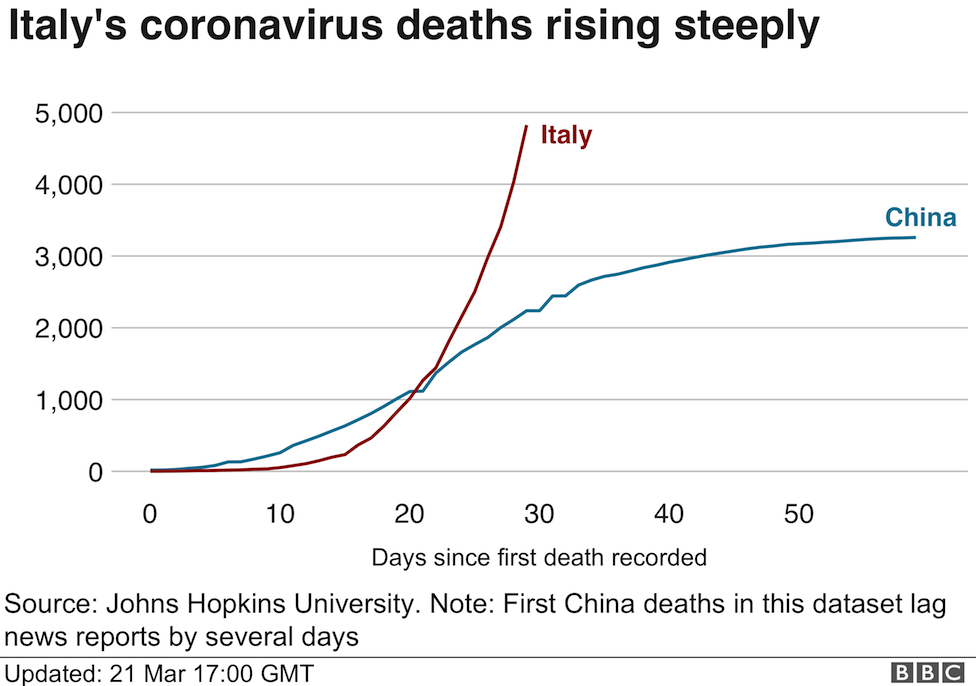

The majority of Italy's deaths have occurred in the northern Lombardy region, which contains the city of Milan. Hospitals there are reportedly at breaking point and retired doctors and nurses have been asked to return to work.
A record 793 deaths in 24 hours was announced on Saturday. The recent jump in deaths comes despite Italian authorities imposing stringent restrictions, closing nearly all shops, bars, hairdressers, restaurants and cafes.
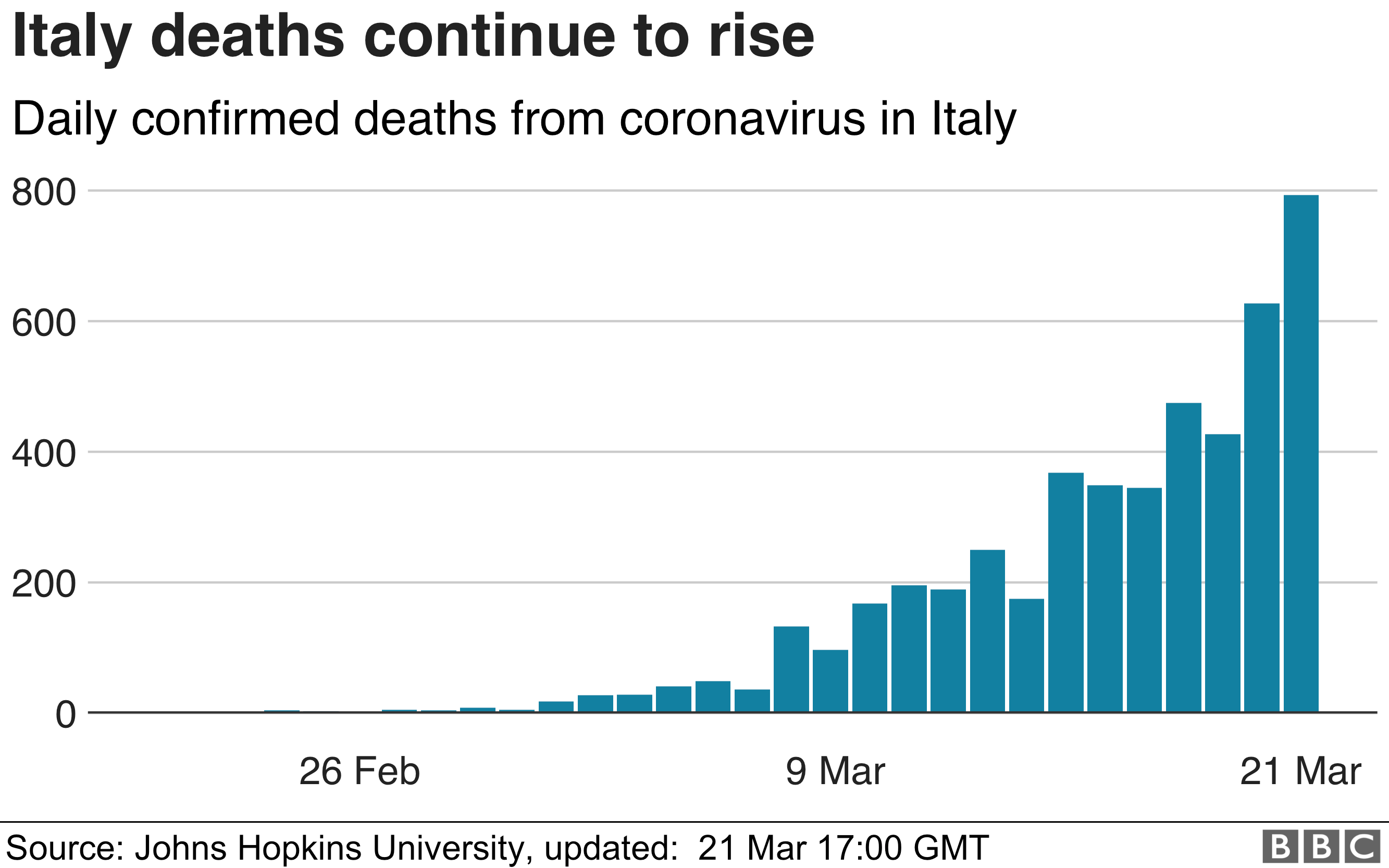
The number of new confirmed cases in Italy also continues to spiral.
They have been increasing since the beginning of March, and there have been 12,000 new confirmed cases in just the past two days.


Schools, gyms, museums, nightclubs and other venues have been shut, and people have been ordered to stay at home and seek permission for essential travel in a bid to slow the virus's spread.
The lockdown, imposed on 12 March, has now been extended beyond the original 25 March end date.
A number of airlines, including British Airways, EasyJet and Ryanair, have cancelled Italy flights until the start of April.

3. Numbers across Europe are also rising
Other European countries have also seen steep rises in infections and deaths, and the region has become the new epicentre of the crisis.
As well as Italy, Spain, France, Germany and the UK now have thousands of confirmed cases each.
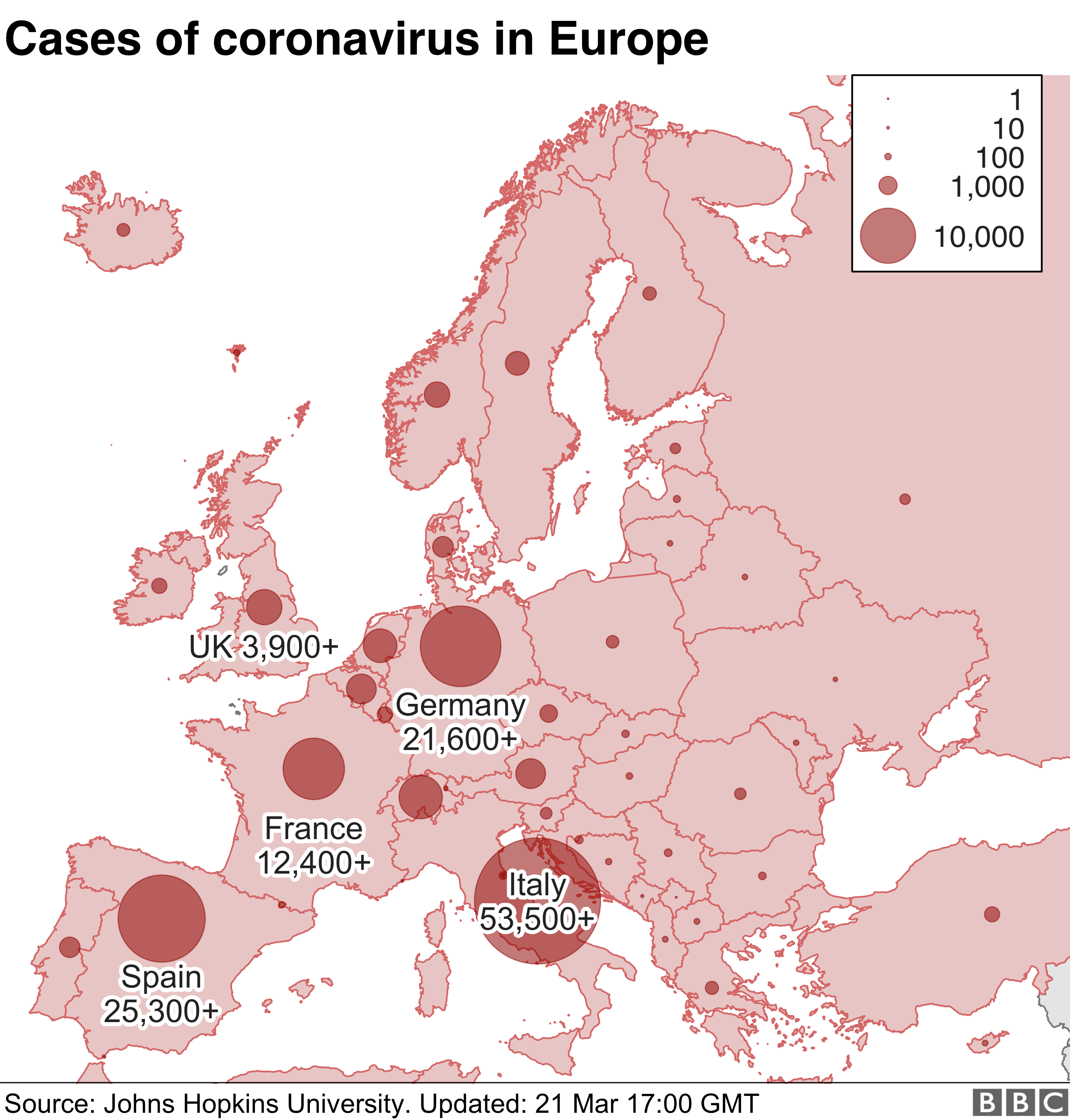

Germany's Chancellor Angela Merkel has warned that up to 70% of its population - some 58 million people - could contract coronavirus.
However, some German virologists dispute the high figure, suggesting a worst-case scenario of 40,000 cases.
Spain, which now has the third highest number of cases outside China, brought in a state of emergency on 14 March.
In the UK, confirmed cases stand at 3,983, and 177 people have died.
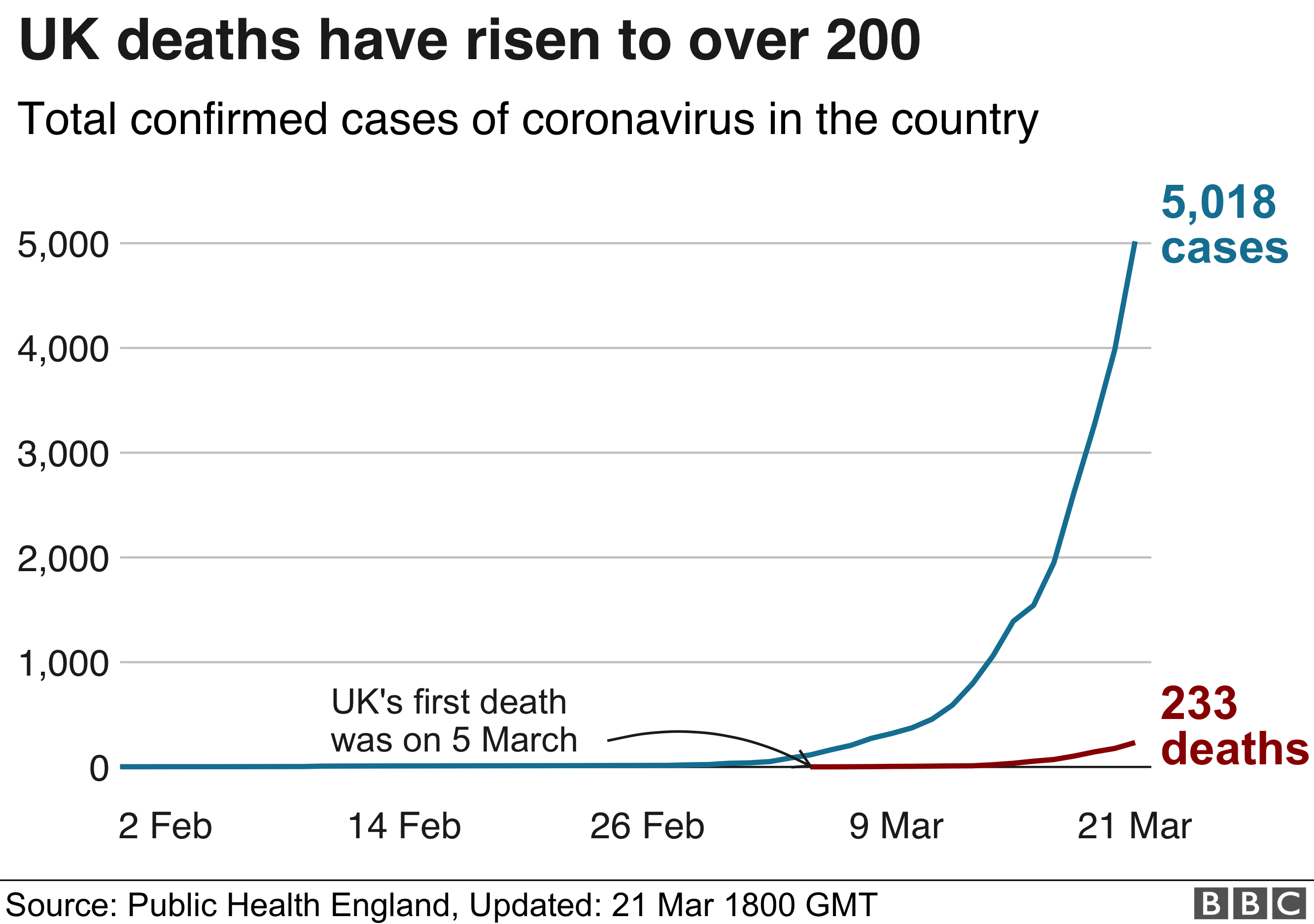
On Monday, Prime Minister Boris Johnson announced a shift in strategy, urging everyone in the UK to avoid unnecessary social contact and work from home where possible.
On Friday he said that pubs, restaurants, theatres, leisure centres and gyms should all close.